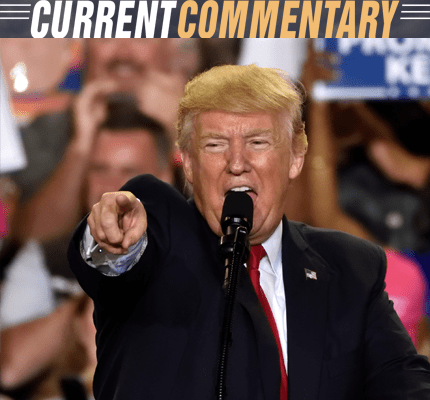
A Question We Need to Ask
By Gary C. Woodward, Ph.D.
Our political and legal institutions are lagging badly in dealing with 21st century rhetoric that encourages acts of violence against others. The sources of this rhetoric of hate may be politicians of various kinds, nativist groups that have formed online communities, or others using live forums. All are national threats that we seem ill-prepared to handle. To add to the challenge, bloodshed motivated by hate has been made worse by a President whose belligerence has placed him in the chain of causes that have led to violence.
No one wants to give ground on protections for Americans to speak and publish at will. The First Amendment is our birthright. Dissent is often a necessary source of influence for needed reforms. The rights of advocates should always have a presumptive position in any discussion that would alter their protections. Even so, we are facing threats especially from two quarters that should have the attention of law enforcement officials everywhere.
We live in a period that is dominated by unprecedented presidential bullying that a reasonable listener could understand as sanctioning attacks on members of the press and opponents.
Incredibly, as I have noted, one source of the problem is the President himself. We live in a period that is dominated by unprecedented presidential bullying that a reasonable listener could understand as sanctioning attacks on members of the press and opponents. Just last week, when a person at a Trump rally suggested shooting border crossers, Trump simply smiled and laughed it off, exhibiting further evidence of his stunning moral vacancy.
In 2018, Trump praised Greg Gianforte, a member of the House of Representatives who assaulted a journalist and knocked him to the floor at his Bozeman, Montana office. Trump applauded this aggression at another rally, noting “any guy that can do a body slam, he’s my kind of — he’s my guy.” It’s part of a larger pattern of sneers and taunts directed at national journalists who are often separated from a jeering MAGA crowd only by a rope line. Some news organizations have had little choice but to hire protection for their correspondents from mobs fired up by the President. That’s how bad it’s become.
At yet another recent rally, Trump talked about reproductive health clinics as if they were in the business of murdering babies. His specific choice of words included “executing babies,” followed by a chopping gesture that we might see in a butcher shop. This kind of talk was apparently enough to motivate at least one man, Matthew Haviland, to threaten to kill “every Democrat” and other pro-choice demons he imagined, triggering a rare response from the FBI’s Joint Terrorism Task Force. We expect Presidents to condemn hate speech, not contribute to it by inciting attacks on other Americans.
The second source of this problem is even more ominous, because it is also omnipresent: hate speech that is easily spread via online extremist manifestos. Most terrorism experts have given up on the old law enforcement bromide of the “lone wolf” shooter, a characterization that might once have been used to explain gun attacks such as those perpetrated on American synagogues in San Diego and Pittsburgh. Today, the more common analysis is that individuals are connected by racist or anti-immigrant websites that still get First Amendment protections. Apparently, even haters have their chat groups. John Earnest, the attacker in San Diego, was reportedly motivated by online rhetoric from the recent New Zealand mass murderer, who was trying to exterminate Muslims.
Online manifestos functioning as calls to action against “alien” groups are all over the internet, sometimes taken down by individual platforms such as Facebook, and sometimes allowed to stand. Groups may be motivated by anti-Semitism, racism, or hostility to immigrants, among other reasons. The problem is enormous because one platform that might reject content can be replaced by another. There is always an internet server somewhere inside or outside the United States that will host poisonous content.
To be sure, an internet that has turned into what the New York Times has called a “sea of hate” is beyond the easy control of any one nation. Hate content easily slips through national and political boundaries. Even so, we could be doing more to curb homegrown threats.
For the most part, hate speech in the United States is protected. A 1969 Supreme Court Case, Brandenburg v. Ohio, allows vitriol to exist unless it is likely to incite “imminent lawless action.” But few federal judges then or now want to prosecute speech on this premise. There is a long legal tradition to err in favor of the hothead expressing verbal hostility. However, this hands-off approach is producing increasingly dire results. While most Americans would accept the rights of even a neo-Nazi group to march, or a group of white supremacists to gather, others might question why incitement is so narrowly defined. For example, English law allows charges to be brought against a person for “incitement to racial hatred.” Would our admirable record of tolerance of free speech be significantly harmed by a similar prohibition?
Smarter minds than mine need to begin to sort all of this out. But it appears that our laws and constitutional protections are far behind our technology and the coarsening of our rhetoric. We now have robust networks for the dissemination of hatred, even while basic norms of civility have withered.


